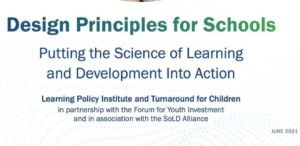DIY: Hiring Coders & Developers

“Coders are tough to find since nearly every industry is looking for them and they are also able to start their own company,” said Alan Louie, the founder of the edtech incubator ImagineK12. He continued, “There’s no magic bullet to finding them. It’s old-fashioned networking based on sharing your exciting idea that will change the world through education. Current employees, meet-ups, startup-weekends, friends and family, ex-coworkers, industry friends are all people to tap.”
The good news is that we are experiencing what Michael Moe called a “near spontaneous explosion of entrepreneurial activity in education.”
“Most coders aren’t aware of the fascinating and challenging problems they could help solve in education, ranging from adaptive learning to big data to implementing pedagogy to thoughtful integration in the classroom,” said Louie. “In my experience coders get excited about difficult and world changing problems, so education is a perfect storm – huge need in the US and globally, challenging technology problems and massive personal satisfaction.”
Finding
Mike Lee, Co-Founder of EdShelf, suggested on EdTech Handbook, “Start with people you know. You may already have a developer or two as a second or third degree connection. The closer the connection, the better. This person doesn’t need to be an experienced developer with a Computer Science degree; someone who is willing to learn can be just as good. Building out your idea could be a great way for them to grow their skills.”
Lee also suggested on EdTech Handbook that Startup Weekend EDU and Ed-Tech Meetup
can be a good place to find developers.
Testing
David Waxman said, “Give candidates a problem to solve in pseudo-code on a whiteboard and have them talk you through their thinking as they go. Don’t rely on written code tests, they evaluate rote memorization. In the real world, programmers have a great reference book — the Internet — and they use it all the time for little language-specific details, code examples and other info that they don’t really need to have in their head.”
Mick Hewitt of MasteryConnect said, “I’ve always been a big 37signals fan, and have always followed their advice when hiring,” Work with prospective employees on a test-basis first. We always give potential developers a project that we can work on together. It’s easy to find something you need done and to engage a project with a prospective developer. You’ll learn so much about their communication style, attention to detail, and they way they handle stress and deadlines.”
Reference & Portfolios
Waxman said, “Ask them about software they’ve written and ask very detailed and specific questions. You’ll engage them and also get a good sense of their real contribution. Have them talk through something they’d like to re-write or do over. This can (should) draw out some passion. It’ll also tell you whether they think in terms of the business (this could increase our load capacity/response time) or think of engineering more in isolation (a much more elegant solution, a more modern technology). Both answers are fine, but it’s a perspective that’s good to understand.”
Connection & Convening
Clay Whitehead of PresenceLearning said, “As Brad Feld said, ‘A convener has much more leverage than a connector.’ Try to convene events, webinars, and other functions related to your company with an eye towards talent as well as clients.”
“Follow and engage people on Twitter,” said Michael Stanton. “Start a tech blog and pose interesting challenges.”
Mission Matters
Whitehead said, “Focus on what makes you unique. We were able to hire three superlative Silicon Valley developers at a time when the demand for their skills was off-the-charts. We didn’t do it through wining and dining or headhunters, but through a clear message about what defines PresenceLearning: our mission to help students by changing the focus of special education from compliance to outcomes. This made us very different than Facebook or Zynga, to our benefit.”
Product & Company Vision
Whitehead added, “Know and communicate your product. We were lucky in that we instinctively knew where our product was going over time and were able to articulate what it would look like from very early on. If you can paint a clear vision of what you are building to potential candidates, they can start to picture their own contributions and importance to the organization well before an offer letter is on the table.”
Jason Lange of Bloomboard said, “Let your prospective hires hear your users talk about your product. If you’re getting lots of feedback from users on a regular basis, then you should be able to have a prospect sit in on one of those conversations relatively easily. Setting up this interaction may seem risky, but it builds tremendous credibility since you can demonstrate how much you value frank user feedback (and are willing to risk someone listening in on a random usability testing session), and if your users love your product, then they become your selling tool to any potential hire. The moment a potential hire hears the excitement that a user has for your product and the candid view of how it could change their life, the rest of the sell is easy.”
Stanton added, “Genuinely build a great company culture and support peoples’ dreams.”
Fit & Career Path
The following questions are useful for any type of employee, including developers: What makes them happy, what type of environment they thrive in and what they aspire to? Do they want to become a manager? Is that a realistic path in your company? Do they like changing projects often or going extremely deep and being the “owner” of part of the system? Then ask yourself honestly if you’ve got a good match. A happy fulfilled developer/team-member is a much more productive one.
Louie added three big ideas on hiring:
- “Concentrate on finding folks who are like-minded and may not have known it until you shared the excitement. Don’t worry about trying to convince everyone you meet to join your quest.”
- “You’re not competing with big tech companies who are also pressing hard for talent. As an entrepreneur you are looking adventurers. Remember Steve Jobs famous quote to John Scully, then PepsiCo President, ‘ Do you want to sell sugar water, or do you want to come with me and change the world?‘”
- “Take your time and be thoughtful who you hire. Early employees have a huge impact on the success and culture of the company because they set the tone. There’s always big pressure to hire folks, but it’s far better to hire for the long run than hire quickly to solve a short term problem. You are building a company, not just getting the next version out the door.”
Cost
Social Matchbox suggests you can expect a “rate range for a Washington, DC based programmer of web applications: $42.15 to $67.15 per hour.”
Coding Recources
- Guru: Hire freelancers and manage projects online
- Vwork: Hire a virtual worker
- Indeed : Job postings
Web Design Resources
- ThemeForest: Web design templates and web developers
- Twitter hastags: Kristi Hines contributes 15 hashtags for finding developers
MasterConnect and Bloomboard are portfolio companies of Learn Capital where Tom Vander Ark is a partner. This blog first appeared on EdWeek.








0 Comments
Leave a Comment
Your email address will not be published. All fields are required.